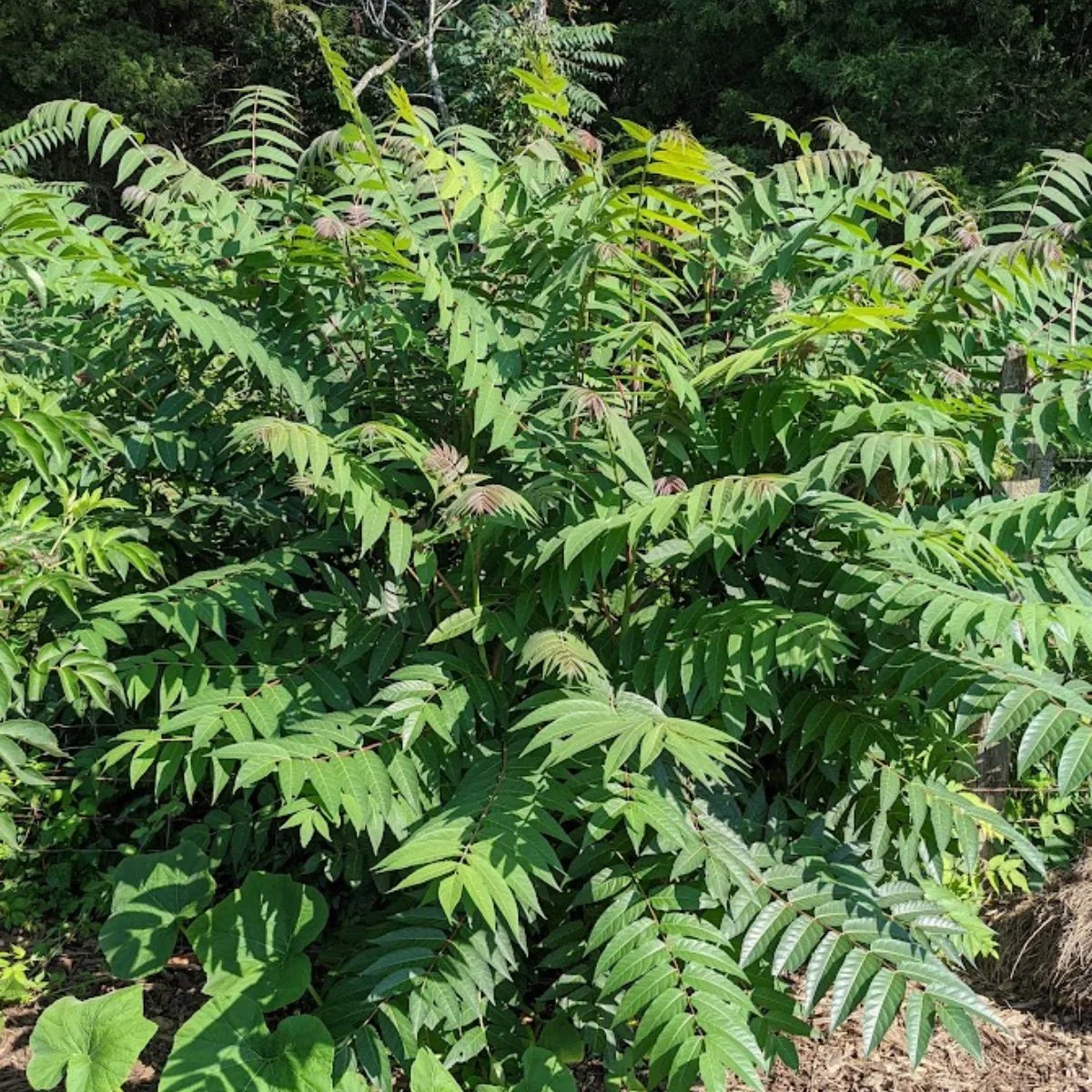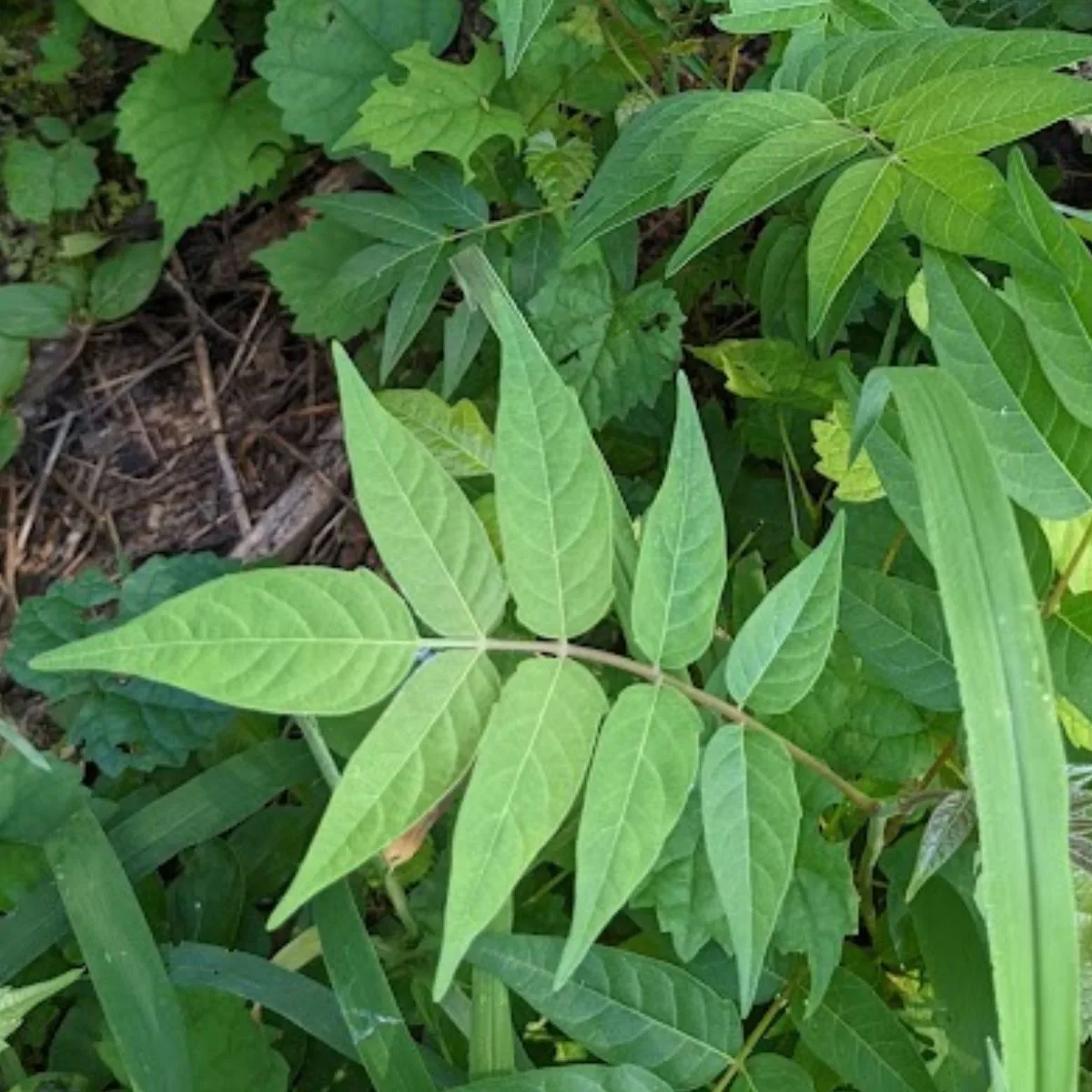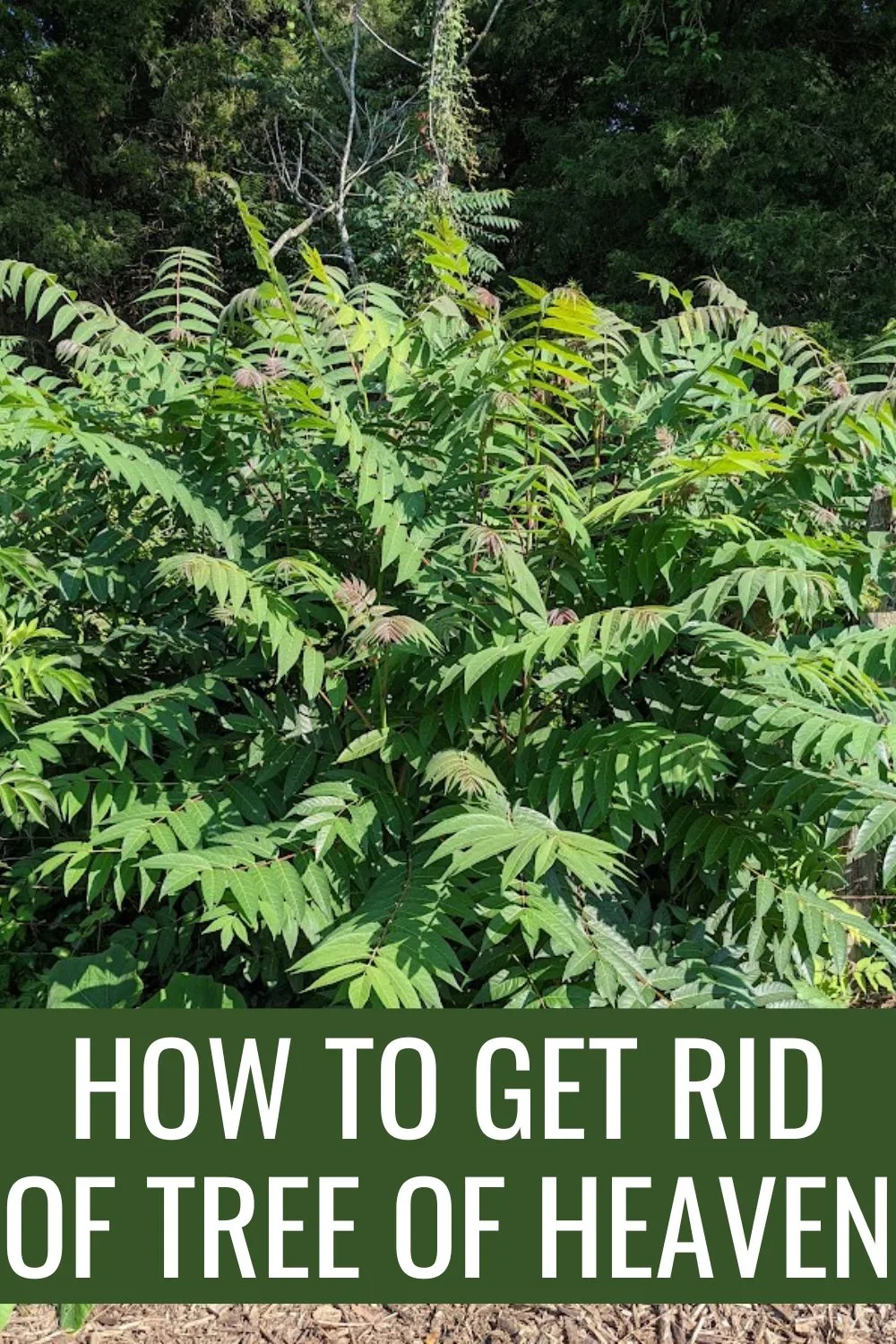Growing and spreading rapidly in even the poorest soils and with little water, tree of heaven is, despite its name, the very definition of “weed tree.” It can cause allergies and irritate the skin, suppress the growth of other plants, and play host to other invasive species. Learn how to identify this noxious weed as well as how to get rid of tree of heaven in the article below.

Tree Of Heaven Identification
Tree of heaven, scientific name Ailanthus altissima, grows in USDA zones 5-8 throughout the US. It can be found in meadows, fields, and on the edge of forests.
How to identify tree of heaven

When mature, this rapidly growing tree can reach a diameter of six feet and a height of 80 feet. Saplings have smooth, brownish-green bark that eventually becomes gray or light brown with a distinct texture resembling the skin of a cantaloupe.
The pinnately compound leaves — leaflets attached on either side of a central stem — range from one to four feet long, with 10 to 40 smooth, lance-shaped leaflets. While the leaflets appear opposite each other, the twigs are alternately spaced.
After the panicle-shaped blossoms fade, female trees produce hanging clusters of one- to two-inch samaras, or winged seeds, like those of maple trees. The seeds of tree of heaven, however, appear singly rather than in pairs.
Perhaps the best way to identify a tree of heaven is by smell. Crushed leaves, broken twigs, and scraped bark all give off a strong, sharp, offensive odor. Although sometimes likened to the smell of wet gym socks, cat urine, or burnt peanut butter, the scent is rather distinctive.
Tree of heaven vs. sumac
At a glance, tree of heaven looks similar to the native sumac, black walnut, and hickory. But look closely at the leaves: tree of heaven has smooth leaflets, while the leaflets of the native trees have serrated edges. If you still aren’t sure, crush a leaf or scrape the bark and take a whiff. As mentioned above, tree of heaven has a very unique, very unpleasant smell.
Is tree of heaven an invasive plant?
Yes! Tree of heaven is an invasive species (learn more about invasive plants). The Chinese tree of heaven was first introduced to the US in the 1700s as a fast-maturing ornamental shade tree, and it is now considered invasive in 30 states. Because it grows quickly and tolerates drought and poor soil, tree of heaven forms dense stands and outcompetes native plants. Plus, it produces allelopathic chemicals that prevent other plants from growing nearby.
Adding insult to injury, tree of heaven seems to be the preferred host of a newer invasive species, the spotted lanternfly.
Tree of heaven also spreads quickly. Mature trees send out root suckers as far as 50 feet from the main trunk, especially when cut or injured. Female trees produce up to 300,000 seeds annually, beginning as young as two years old. Its fast-spreading nature makes tree of heaven difficult to get rid of, so it’s important to learn how to do so properly.
How to Get Rid of Tree of Heaven
The PennState Extension website lists four effective methods for controlling tree of heaven: hand-pulling, foliar herbicide application, hack-and-squirt treatment, and basal bark treatment.
Mechanical
1. Hand-pulling: Small seedlings may be pulled by hand when the soil is moist. Just make sure to get all of the roots, as even a small fragment can resprout. If the seedling does not easily come out of the ground, it may be a root sucker, which cannot be hand pulled.
Do not cut or mow tree of heaven, as this only encourages root suckers and stump sprouting.
Chemical
While I almost never advocate for the use of chemical herbicides, controlling tree of heaven requires targeting the roots with herbicides. Applying herbicide to a cut stump does not prevent root suckering; herbicide must be applied to standing trees.
2. Foliar herbicide may be applied where feasible without getting it on non-target plants. This is especially effective on smaller, lower-growing trees. A follow-up hack-and-squirt application may be necessary for any larger stems.
3. Hack-and-squirt treatment can also be used on its own and is best for smaller infestations of trees with trunks at least one inch in diameter. This method involves making evenly spaced, downward-angled cuts in the trunk and then squirting herbicide into the wounds. A general rule of thumb is to make one cut per inch of trunk diameter, with a minimum of two cuts per tree. It is also important to leave intact bark between each cut to ensure the herbicide reaches the roots.
4. Basal bark treatment involves applying herbicide directly to the trunk in a 12- to 18-inch solid band around the base of the tree (I successfully used Triclopyr 4 mixed with oil). This method works best for trees under six inches in diameter.
In almost all cases, follow-up treatment will be necessary, so make sure to monitor the site for any surviving trees or new sprouts. Always wait about 30 days or longer, if possible, after applying herbicide before cutting the trees to make sure the herbicide has taken effect.
Timing
Proper timing of herbicide applications is imperative, as applying herbicide at the wrong time will only injure, but not kill, the tree.
Apply herbicide to tree of heaven between mid and late summer, when the trees are sending carbohydrates to the roots. Depending on your area, this should be around July through mid-October or until the onset of fall color. Cutting the trees can then occur in late fall through early spring (about mid-November through April) after the trees begin showing symptoms of the herbicide treatment.
Tree of heaven is a noxious, and even stinky, weed tree. But with the proper control methods and a bit of patience and vigilance, you can get rid of it. It may be a tree of heaven in its native China and Taiwan, but here, it’s quite the opposite.
Learn more about how to get rid of uninvited and unwanted plants in your garden.


9 Invasive Plants In Nebraska Gardens (And 18 Natives To Plant Instead)
Monday 31st of July 2023
[…] A deciduous tree with rapid growth, the tree of heaven grows up to 80 feet tall with a trunk diameter of up to six feet. Look for pinnately compound leaves with 10 to 41 smooth leaflets. Crushing the leaves or damaging the bark releases a pungent odor. In early summer, clusters of yellowish flowers bloom above the leaves, and female trees produce tan to reddish-winged seeds. Here’s how to properly remove tree of heaven from your yard. […]
How To Get Rid Of Pokeweed Simply And Effectively
Thursday 27th of July 2023
[…] how to get rid of tree of heaven […]
9 Worst Invasive Plants In Iowa (And 18 Natives To Plant Instead)
Saturday 5th of November 2022
[…] to the stump. Monitor the following year for any resprouts. Learn more about how to remove tree of heaven from your […]